Choice of Topic
- East London’s demographic dynamism.
- The area is cosmopolitan in nature.
- The native population was the Cockneys.
- Mainly populated by Bangladeshi immigrants.
- It is a good demonstration of effects of immigrant waves.
- The area is contentiously classified.
At one point, it appeared that the changing demographics of East London would result in chaos and disarray (Butler and Hamnett 2011). Although the Cockneys were the original tenants in East End, their number is now lower than that of the Bangladesh immigrants. This research is vested in the factors that led to these demographic changes. Some of the urban areas that had homogeneous populations before the war (1940s) have had their demographics altered by immigrant waves. East End is a perfect demonstration of these shifts. The topic of study could eventually clarify the contentious issues that apply to the classification of East end and the entire East London.
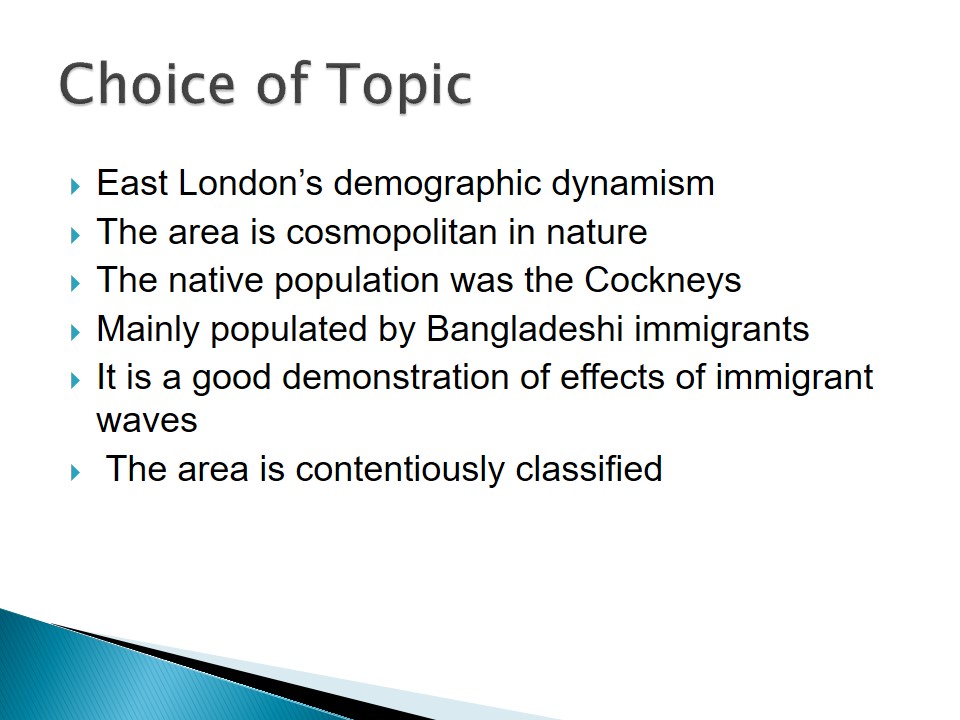
Methods Used in the Study
- Use of statistics from government agencies.
- Researching of population trends.
- Focus on the changing demographics over the last century.
- Use of qualitative data to explain the quantitative.
- Literature review on Multiculturalism trends in London.
- Analysis of literature review.
- Examination of emerging multiculturalism trends.
- Contextualization of the results.
- Conclusion of the findings.
The study utilizes statistics from reliable sources in a bid to map the current and the past population trends. Several past case studies on multiculturalism will be used to analyze the changing trends in East London.
The literature review is analyzed and the views of the various authors are correlated. The correlation highlights how multiculturalism trends have changed over the course of time. The context of the change through which the results are discussed is my patents’ lifetime.
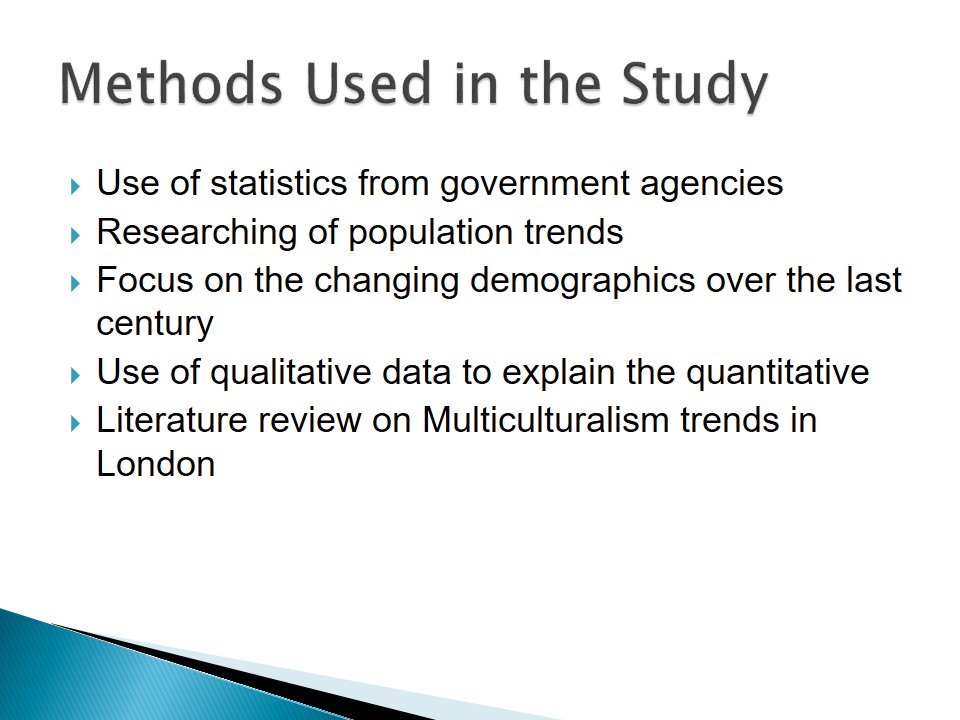

The Findings So Far..
- The natives of East end were originally Cockneys.
- East London bears a connection to the Victorian era.
- Evidence of strong Kinship in History (Young & Wilmott 2013).
- Demographic patterns affected by Bangladeshi migration.
- Changing attitudes in the current East end.
- Racial tensions.
- The Indian influence in East End.
- Immense changes in my parents’ lifetime.
- The area will continue to change in future.
The Cockneys are the first modern natives of East London and they brought with them the Victorian age connection (Dench, Gavron, and Young 2006). The influence of Victorian British was evident in East End as recently as the 1900s. An influx of migrants from Bangladeshi changed the multicultural outlook of the region.
With new inhabitants came new attitudes, mostly of resentment towards the newcomers by the natives. Consequently, the issue of race began featuring in East End. Currently, the merging Indian and English culture continue to produce an interesting type of multiculturalism. The second generation of Bangladeshis will produce a more uniform-culture London than the current multiculturalism.
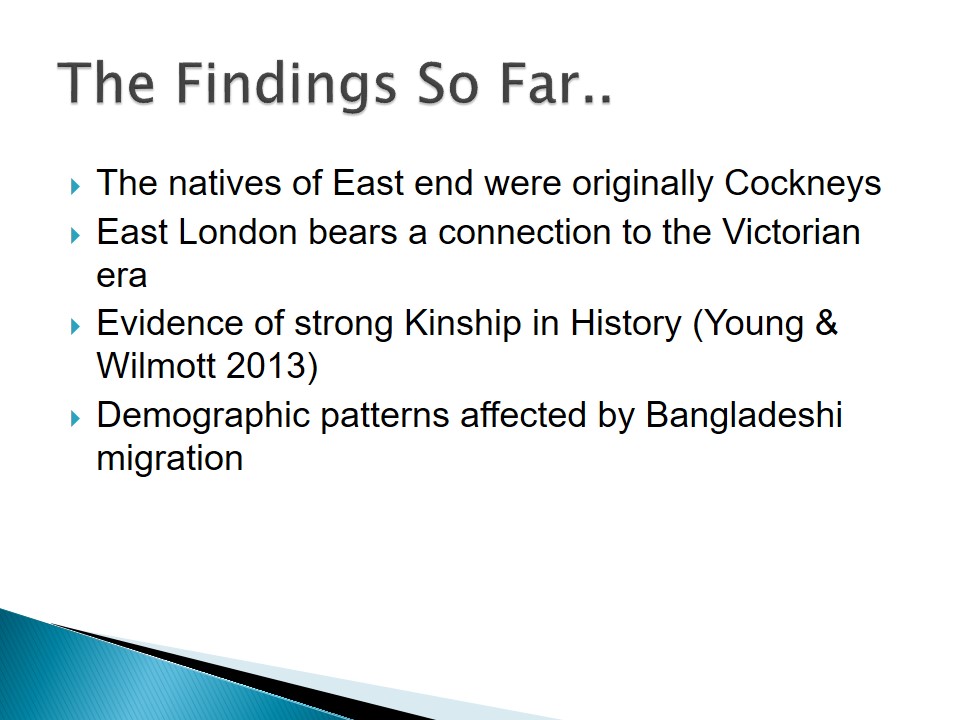
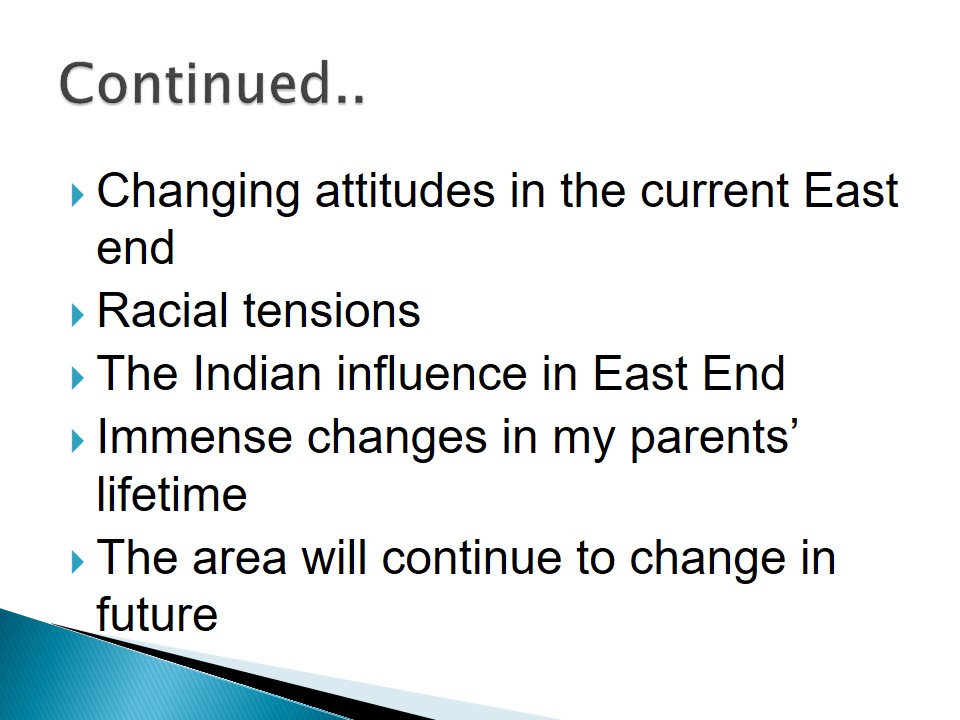
Next Stage of Research
- How have the Bangladeshi influenced other East Enders.
- What is the future demographic projections.
- Multiculturalism in regards to intergenerational outlook.
- What is the future for Cockneys in East End.
Have the immigrants had any major impact on East London and its inhabitants and to what extent? The influx of immigration has went down and the influence of the Cockneys has waned, future research can point out how the future East End will fair culturally. Is there going to be an outside influence or will the current cultures merge to formulate a new influence? Research can also be used to indicate how different generations regard the multiculturalism of East End (Vertovec 2010). Eventually, what role will the original inhabitants play in the East.
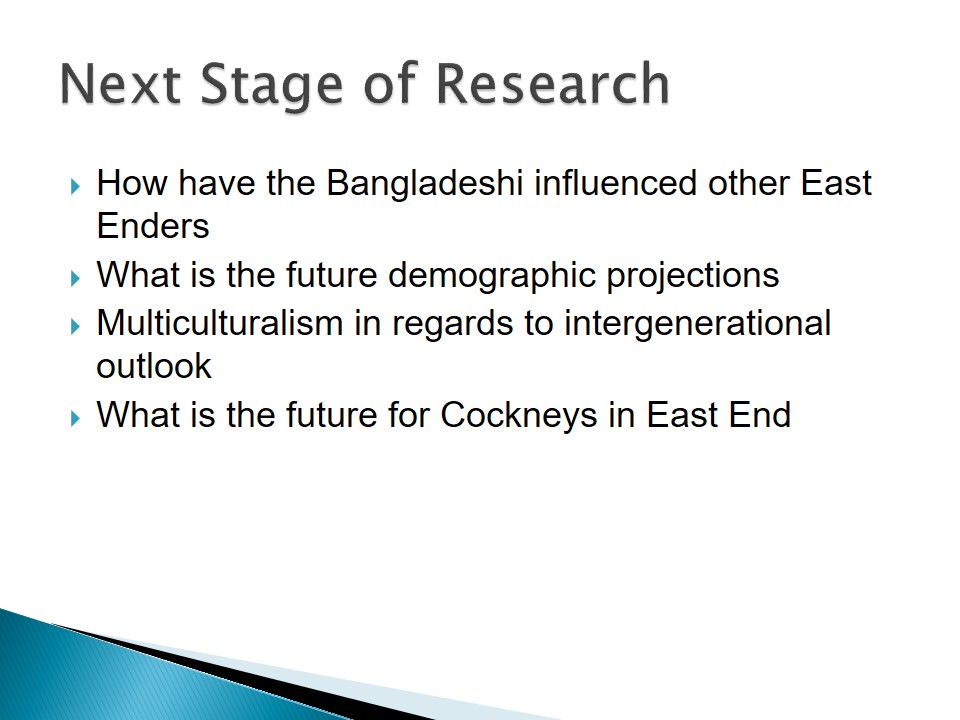
Importance of Topic
- The entire London is witnessing trends similar to East End.
- Over fifty years after the war- intergenerational shifts are happening.
- Cockneys embody various cultural groups.
- Multicultural future of London is uncertain.
- Important to planners and policy makers.
Some of the immigrants who settled in London after the World War II have spawned two generations, and this has led to shifts in demographics and cultures. The situation facing Cockneys is replicated in various areas whereby natives feel that they have been ‘squeezed’ by immigrants. The advent of globalization makes it difficult to adjudge the future of multiculturalism in London (Castles 2005).
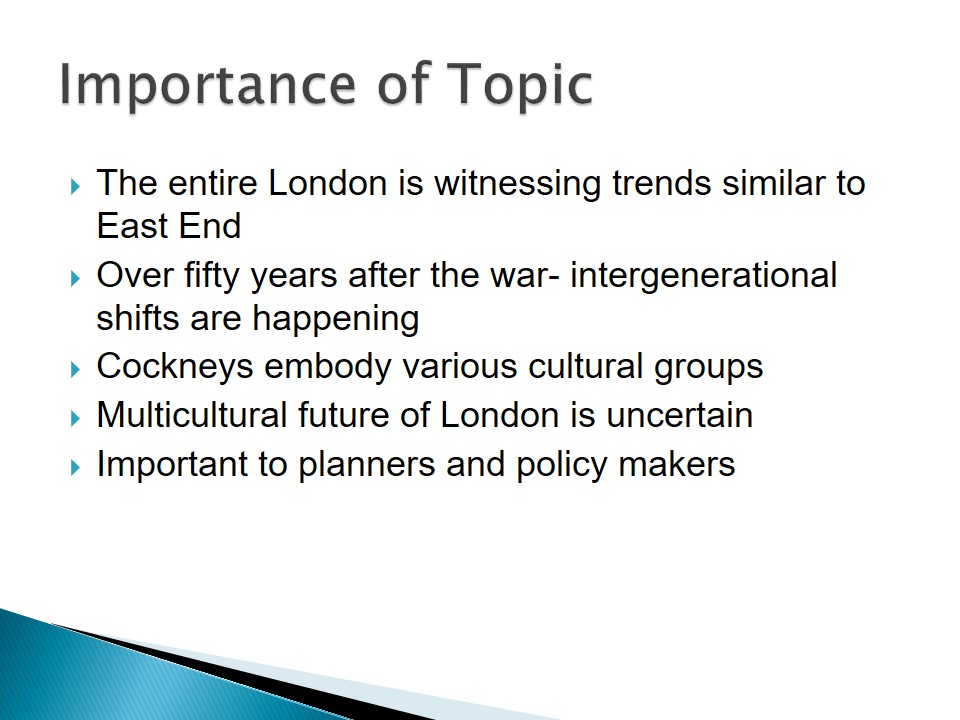
References
Butler, T and Hamnett, C 2011, Ethnicity, class and aspiration: understanding London’s new East End, Policy Press, London.
Castles, S 2005, ‘How nation‐states respond to immigration and ethnic diversity’, Journal of Ethnic and Migration Studies, vol. 21, no. 3, pp. 293-308.
Dench, G., Gavron, K., and Young, M 2006, The new East End: kinship, race and conflict, Profile Books, London.
Vertovec, S 2010, ‘Towards post‐multiculturalism? Changing communities, conditions and contexts of diversity’, International Social Science Journal, vol. 61, no. 199, pp. 83-95.
Young, M. and Wilmott, P 2013, Family and kinship in East, Routledge, London.